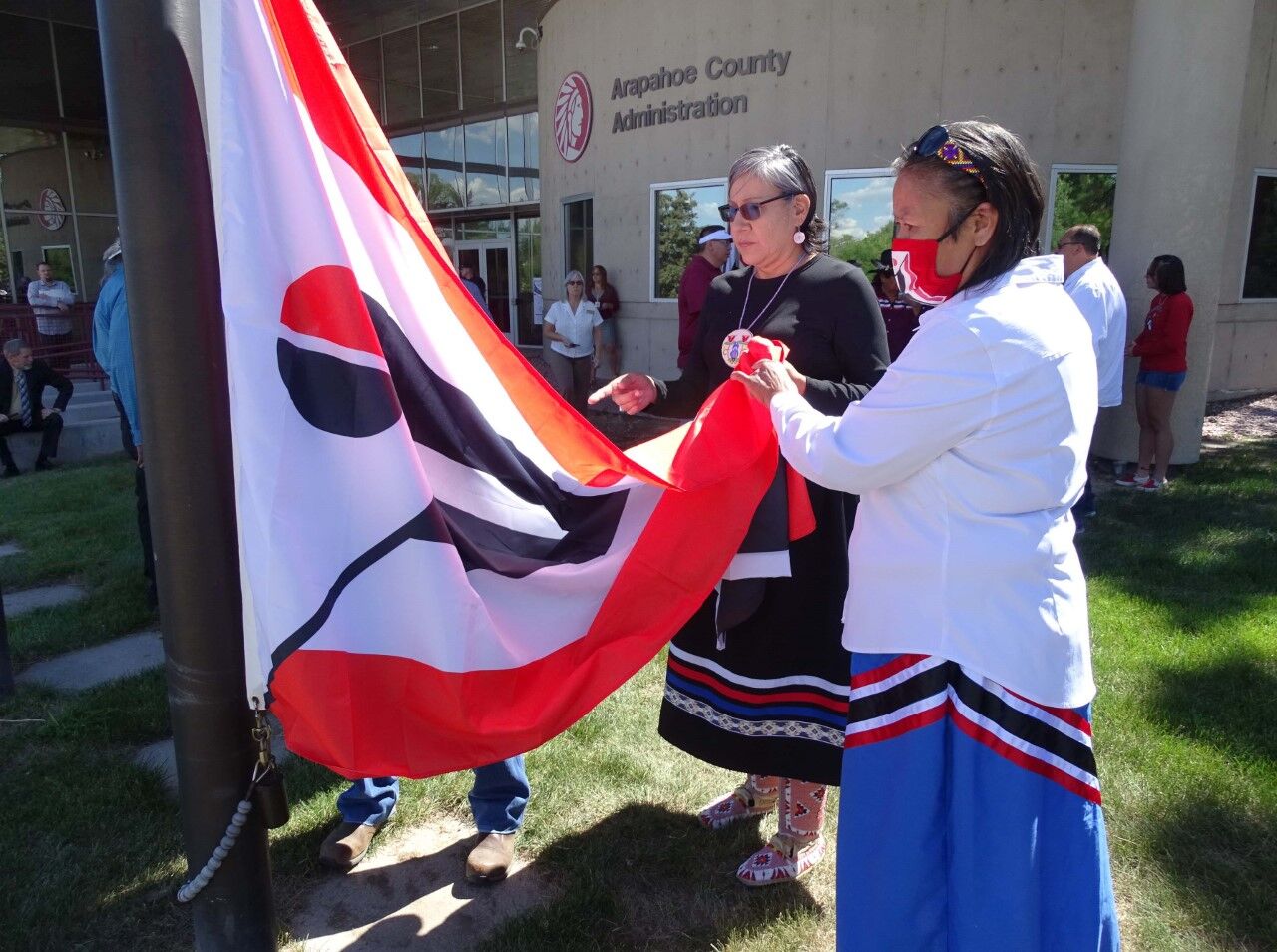Agreement seeks to ease Colorado’s troubled relations with tribe
Almost 158 years after Colorado troops slaughtered 150 Arapahos at the Sand Creek Massacre, Arapahoe County Commissioners on Tuesday signed an agreement with the Northern Arapaho tribe marking what they said is a new relationship between the tribe and the government.
“It means so much,” said Gail Ridgely, 70, great-great-grandson of Arapaho Chief Little Raven, one of the tribe’s leaders at the time of the encounter.
After the signing, Ridgely reached down for a handful of soil outside the county administration building, then rubbed it into his chest. “My DNA is here,” Ridgely said. “Little Raven camped here; our people were born here.”
State Supreme Court affirms heightened responsibility for counties to American Indian families
Ridgely and other tribal representatives traveled 350 miles to their namesake county from the Wind River Reservation near Riverton, Wyoming, where Northern Arapahos were sent following a treaty in 1878, and where around 10,000 members live today with members of the Eastern Shoshone tribe.
Ridgely, whose brother Ben Ridgely signed the agreement on behalf of the tribe’s governing business council, said the massacre and exile have traumatized the tribe for generations.
His father, Ridgely said, was part of Gen. Douglas MacArthur’s invasion of the Philippines during World War II. “He came back as a man,” Ridgely added. But when his father and other U.S. Army vets returned home in uniform to nearby Riverton, locals marched them back on the train, insisting that they leave town and return to their reservation.
Paying close attention to the story was Jeff Rasp, who just retired as principal of Strasburg High School, along with one of his students, Leyla Jaramillo. The pair had come down from their town along I-70 bordering Arapahoe and Adams counties to watch the event.
State Commission on Indian Affairs keeps Lamar on banned mascot list — for now
In 2015, Rasp began a program for high school seniors to study the Arapahos’ history and reached out to the tribe for a connection. He has led five trips for students to the site of the massacre 125 miles southeast in Kiowa County and has prompted other schools to establish relationships with the tribe.
Nancy Jackson, chair of the County Commissioners, presented the agreement and signed on behalf of the county. “This signifies a deep commitment and an ongoing relationship with the tribe,” she told the tribal representatives.
Following the ceremony, tribal U.S. veterans Glenda Little Bird and Suzette Seminole ran the Arapaho tribal flag up the flagpole alongside the stars and stripes and the county flag. Matthew Wallowingbull, a spiritual leader of the tribe, led a prayer, followed by a drum ceremony.
Denver's e-bike rebate program will return with limited monthly release starting July 11
Ridgely, who worked with the National Park Service in researching the site at Sand Creek, said that although the tribe was grateful for the agreement, the healing process from the troubled relations with white neighbors was ongoing.
The Northern Arapahos are one of four groups of Arapahos who roamed the upper Arkansas and Platte Rivers, and a dwindling number still speak their native Algonquin language, dating from when the tribe lived farther east across the continent.





